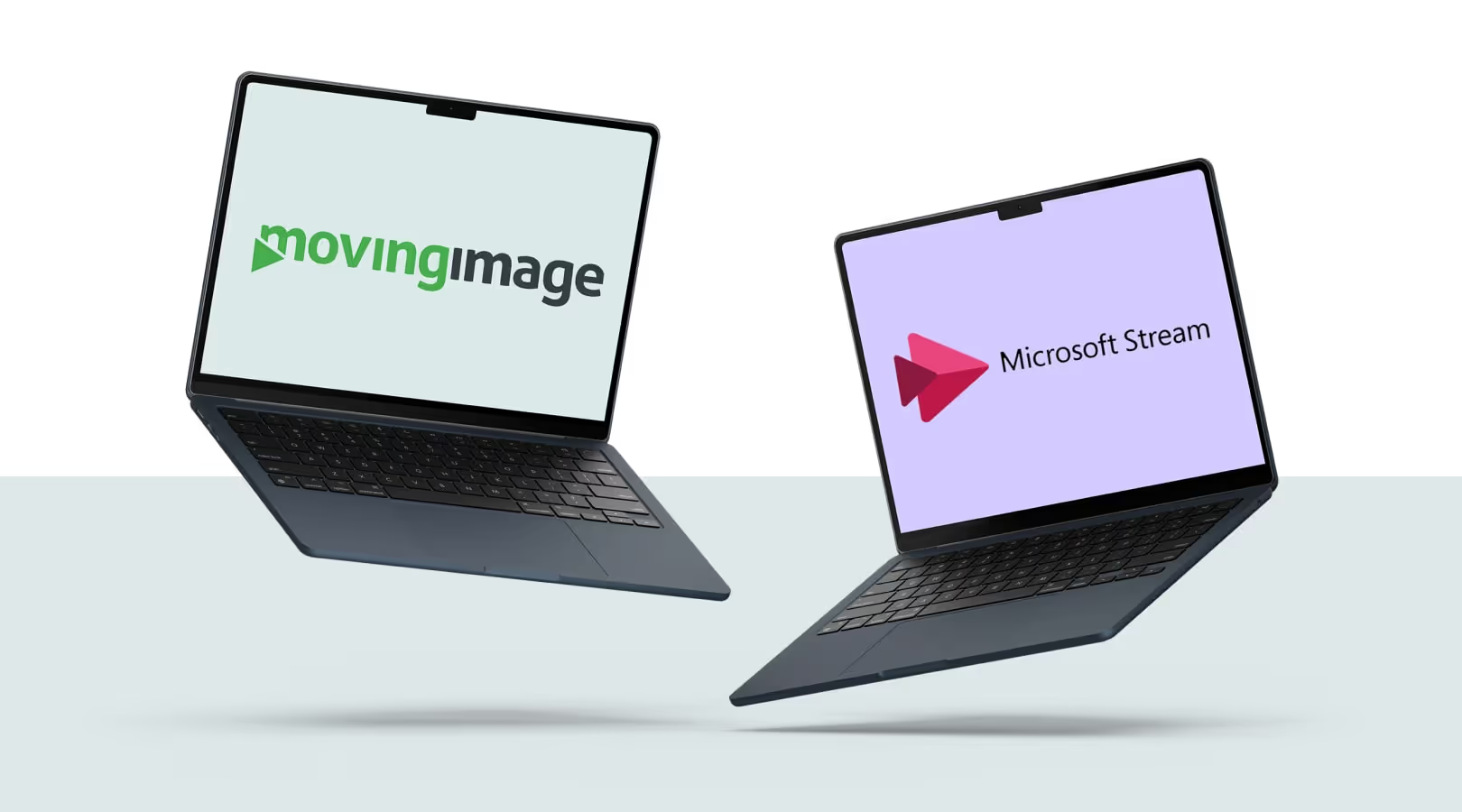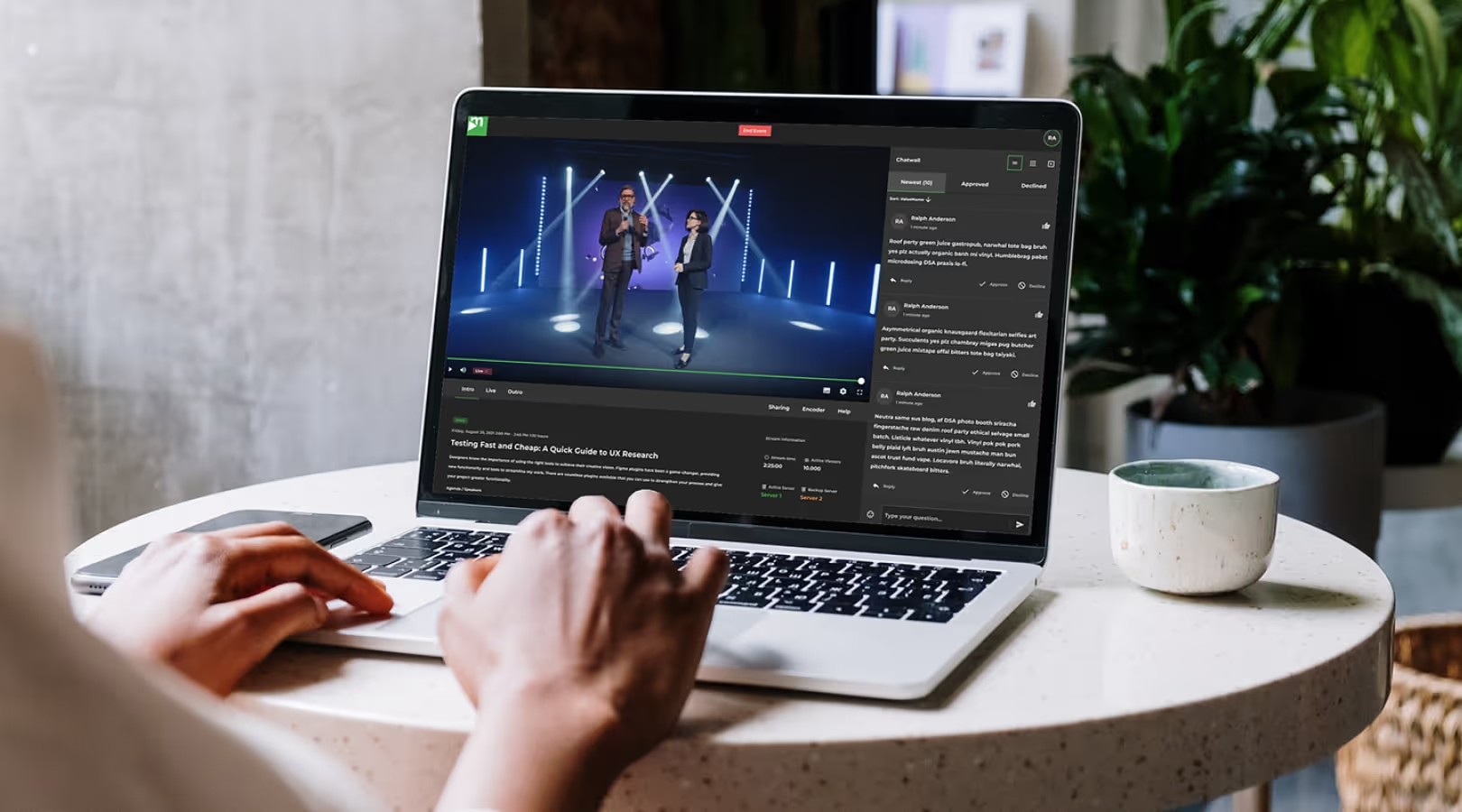Create the perfect thumbnail: 5 tips for better video performance

Driving your success with video

Create the perfect thumbnail: 5 tips for better video performance
What is a thumbnail?
The word “thumbnail” literally refers to a fingernail-sized image. A thumbnail is a miniature preview of the original video. Why is this small preview image so important? Because it can increase viewer engagement—such as your click-through rate—by up to 154%. In fact, 90% of the top-performing YouTube videos use a custom thumbnail.
That’s why you should always make sure your videos include a strong, meaningful thumbnail. In most cases, it’s what determines whether a user clicks or scrolls past. You can think of thumbnails as the visual equivalent of a compelling headline—they’re designed to capture attention and spark curiosity. And when your thumbnail convinces users to watch, it can have a big impact on overall engagement.
What makes a thumbnail successful?
An effective thumbnail should:
- Give viewers a sneak peek of the video content
- Encourage clicks
- Follow a consistent corporate design or visual pattern (e.g. for videos in a playlist)
- Be high-resolution for phones, tablets, and desktop screens
- Avoid too much text (show, don’t tell)
Text elements in the image – finding the right balance
A good rule of thumb is that text should take up no more than 20% of the thumbnail image. That’s because most viewers watch videos on social media via mobile devices, where screen space is limited. So try to stick to around six words to stay within the ideal range. The best approach is to use bold, high-impact keywords that instantly catch your audience’s eye.
Contrast and color choice
Did you know that yellow statistically performs best in thumbnails? That’s because the color stimulates more receptors in the human eye and naturally stands out.
Use color combinations that create a strong visual contrast. Yellow and violet, for instance, form a complementary contrast that’s especially effective. High-contrast colors help your viewers process and navigate visual information more easily.
With photo editing software like Photoshop, you can access the full color palette and fine-tune your image’s saturation and sharpness as needed.
Neuromarketing for greater persuasive power
Make use of human elements in your thumbnails—especially faces, emotions, and eye direction. Faces help viewers connect with your video on a personal level, adding a human touch that builds trust and curiosity.
Australian usability expert James Breeze discovered that people tend to follow the gaze of a person shown in an image. So if you’re highlighting something specific in your thumbnail, place it in the direction the person is looking.

Facial expressions can also trigger emotional responses. Choose expressions strategically to evoke the mood or tone you want your audience to associate with the video.
Standardize your brand design
Consistency is key when it comes to building brand recognition. Once your viewers become familiar with your design, your videos will stand out instantly in search results. That’s why it's essential to establish a recognizable visual style and stick to it across all your video content.
You can still differentiate between video series by using separate playlists on YouTube—each with its own variation of the design. Just make sure you maintain a cohesive look overall and don’t reinvent the layout for every single video.
A great example of this is t3n: they use a consistent layout, typography, and color scheme across their thumbnails, making their videos easy to recognize at a glance.

Keep different screen sizes in mind
Choose a Full HD resolution (1920 x 1080 pixels) for your thumbnail to ensure it looks sharp across all devices—from smartphones to large TVs. Poor quality or pixelated visuals can create a negative first impression and discourage clicks.
Also keep in mind that your video may be cropped or overlaid differently depending on the platform or screen size. For example, timestamp overlays on YouTube often cover the bottom right corner of a thumbnail. To avoid readability issues, never place important text or design elements in that area.
How to create thumbnails with ease
New to thumbnail creation? No worries! There are user-friendly online tools that let you design thumbnails even without any prior experience. Canva is a free, browser-based design platform that makes it simple to create posts, banners, images—and thumbnails. Customize your visuals with the font and color of your choice, add effects and stylish elements, and select the aspect ratio that fits your needs.
Pixlr is another option—available on iOS, Android, and the web. It offers countless templates, filters, and editing features to help you design eye-catching thumbnails. Want to add a face from a stock image or another source? Use Pixlr’s AI-powered background remover to isolate it and place it seamlessly into your thumbnail design.
With our VideoManager Pro, managing thumbnails is just as easy—even for a large number of videos. Upload your custom thumbnail or simply select a fitting frame from the video itself. Your chosen thumbnail is automatically updated across all embedded versions.
Conclusion
With these 5 tips, creating click-worthy thumbnails is a breeze. Whether it’s on your website, YouTube, or social media—your content will stand out with the right thumbnail and grab everyone’s attention.
Looking for more expert video tips and tricks? You might also be interested in:
Our Speakers
What is a thumbnail?
The word “thumbnail” literally refers to a fingernail-sized image. A thumbnail is a miniature preview of the original video. Why is this small preview image so important? Because it can increase viewer engagement—such as your click-through rate—by up to 154%. In fact, 90% of the top-performing YouTube videos use a custom thumbnail.
That’s why you should always make sure your videos include a strong, meaningful thumbnail. In most cases, it’s what determines whether a user clicks or scrolls past. You can think of thumbnails as the visual equivalent of a compelling headline—they’re designed to capture attention and spark curiosity. And when your thumbnail convinces users to watch, it can have a big impact on overall engagement.
What makes a thumbnail successful?
An effective thumbnail should:
- Give viewers a sneak peek of the video content
- Encourage clicks
- Follow a consistent corporate design or visual pattern (e.g. for videos in a playlist)
- Be high-resolution for phones, tablets, and desktop screens
- Avoid too much text (show, don’t tell)
Text elements in the image – finding the right balance
A good rule of thumb is that text should take up no more than 20% of the thumbnail image. That’s because most viewers watch videos on social media via mobile devices, where screen space is limited. So try to stick to around six words to stay within the ideal range. The best approach is to use bold, high-impact keywords that instantly catch your audience’s eye.
Contrast and color choice
Did you know that yellow statistically performs best in thumbnails? That’s because the color stimulates more receptors in the human eye and naturally stands out.
Use color combinations that create a strong visual contrast. Yellow and violet, for instance, form a complementary contrast that’s especially effective. High-contrast colors help your viewers process and navigate visual information more easily.
With photo editing software like Photoshop, you can access the full color palette and fine-tune your image’s saturation and sharpness as needed.
Neuromarketing for greater persuasive power
Make use of human elements in your thumbnails—especially faces, emotions, and eye direction. Faces help viewers connect with your video on a personal level, adding a human touch that builds trust and curiosity.
Australian usability expert James Breeze discovered that people tend to follow the gaze of a person shown in an image. So if you’re highlighting something specific in your thumbnail, place it in the direction the person is looking.

Facial expressions can also trigger emotional responses. Choose expressions strategically to evoke the mood or tone you want your audience to associate with the video.
Standardize your brand design
Consistency is key when it comes to building brand recognition. Once your viewers become familiar with your design, your videos will stand out instantly in search results. That’s why it's essential to establish a recognizable visual style and stick to it across all your video content.
You can still differentiate between video series by using separate playlists on YouTube—each with its own variation of the design. Just make sure you maintain a cohesive look overall and don’t reinvent the layout for every single video.
A great example of this is t3n: they use a consistent layout, typography, and color scheme across their thumbnails, making their videos easy to recognize at a glance.

Keep different screen sizes in mind
Choose a Full HD resolution (1920 x 1080 pixels) for your thumbnail to ensure it looks sharp across all devices—from smartphones to large TVs. Poor quality or pixelated visuals can create a negative first impression and discourage clicks.
Also keep in mind that your video may be cropped or overlaid differently depending on the platform or screen size. For example, timestamp overlays on YouTube often cover the bottom right corner of a thumbnail. To avoid readability issues, never place important text or design elements in that area.
How to create thumbnails with ease
New to thumbnail creation? No worries! There are user-friendly online tools that let you design thumbnails even without any prior experience. Canva is a free, browser-based design platform that makes it simple to create posts, banners, images—and thumbnails. Customize your visuals with the font and color of your choice, add effects and stylish elements, and select the aspect ratio that fits your needs.
Pixlr is another option—available on iOS, Android, and the web. It offers countless templates, filters, and editing features to help you design eye-catching thumbnails. Want to add a face from a stock image or another source? Use Pixlr’s AI-powered background remover to isolate it and place it seamlessly into your thumbnail design.
With our VideoManager Pro, managing thumbnails is just as easy—even for a large number of videos. Upload your custom thumbnail or simply select a fitting frame from the video itself. Your chosen thumbnail is automatically updated across all embedded versions.
Conclusion
With these 5 tips, creating click-worthy thumbnails is a breeze. Whether it’s on your website, YouTube, or social media—your content will stand out with the right thumbnail and grab everyone’s attention.
Looking for more expert video tips and tricks? You might also be interested in:



.avif)


.avif)






.avif)





